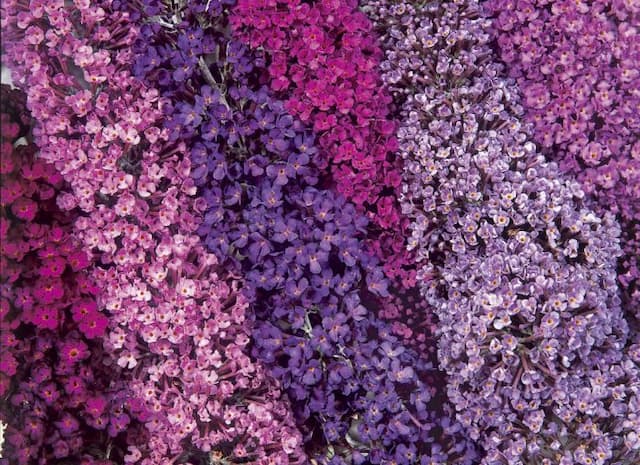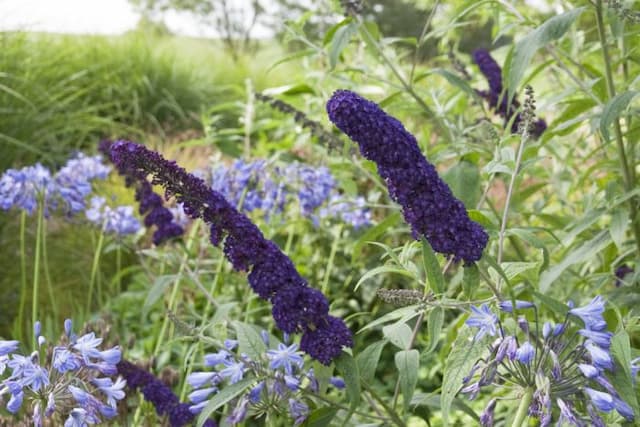Twinspur Diascia vigilis

ABOUT
The plant commonly known as Twinspur showcases a lush spread of foliage, characterized typically by its small, ovate leaves that are often a rich green in color. The leaves form a dense mat that serves as the backdrop for the true stars of the show – the flowers. These blossoms are unique and easily recognizable, with a tubular shape that flares out into two prominent lobes at the mouth, resembling a pair of spurs that might have inspired the plant's common name. The blooms come in a variety of shades, often found in hues of pink, salmon, coral, or red, adding a vibrant splash of color to any setting where the plant is grown. These colors stand out beautifully against the verdant green of the leaves, creating a delightful contrast that makes this plant a popular choice for garden enthusiasts. The Twinspur flowers possess a delicate charm, as they cluster atop the slender stems that rise just above the foliage. The soft textures of the petals invite closer inspection, and the blooms are frequently visited by butterflies and other pollinators, which adds to the plant's decorative appeal. The overall appearance of Twinspur is compact and mounding, making it an ideal selection for borders, rock gardens, or as a trailing element in containers where its foliage and flowers can spill over the edges gracefully. Its subtle beauty and the colorful display of flowers make it an attractive addition to any garden space, offering a visual feast that extends over the blooming months.
About this plant
 Names
NamesFamily
Scrophulariaceae
Synonyms
Twinspur
Common names
Diascia cordata, Diascia barberae
 Toxicity
ToxicityTo humans
The plant in question, Diascia vigilis, commonly known as Twinspur, is not widely known to be toxic to humans. There is limited information available concerning its toxicity, and it is not commonly listed as a poisonous plant. However, like with any plant, individuals may have allergies or sensitivities to it that could cause mild reactions. If consumed in quantity, it might cause stomach upset or discomfort due to the general irritant nature of many plants if they are not typically part of the human diet. If you suspect poisoning from any plant, it is important to seek medical attention.
To pets
Twinspur, or Diascia vigilis, is similarly not known to be particularly toxic to pets. There is limited information suggesting it is a hazard to cats, dogs, or other domestic animals. Pets may sometimes nibble on plants out of curiosity or boredom, which could potentially lead to mild gastrointestinal irritation or upset. If an animal ingests a substantial amount of the plant and shows signs of distress such as vomiting, diarrhea, or unusual lethargy, it is advisable to consult a veterinarian.
 Characteristics
CharacteristicsLife cycle
Perennials
Foliage type
Evergreen
Color of leaves
Green
Flower color
Pink
Height
1 foot (30 centimeters)
Spread
1 foot (30 centimeters)
Plant type
Herb
Hardiness zones
9
Native area
South Africa
Benefits
 General Benefits
General Benefits- Attracts Pollinators: Diascia, commonly known as Twinspur, is known to attract bees and butterflies, which are essential for pollination.
- Aesthetic Appeal: With its showy flowers that come in shades of pink, orange, and red, Twinspur adds vibrant color to gardens and landscapes.
- Ground Cover: Twinspur can serve as an effective ground cover due to its low-growing habit, helping to suppress weeds and minimize soil erosion.
- Easy Maintenance: It is generally considered easy to care for, requiring minimal maintenance once established in suitable conditions.
- Container Gardening: Twinspur is suitable for container gardening, allowing those with limited space to enjoy its beauty on patios or balconies.
- Extended Blooming Season: Twinspur typically has a long flowering season, providing color and interest for many months.
- Cold Tolerance: The plant is reasonably frost tolerant, making it suitable for cooler climates where it can survive light frosts.
- Edging Plants: Due to their neat mounding habit, Twinspur is ideal for edging borders and pathways in garden design.
 Medical Properties
Medical PropertiesThis plant is not used for medical purposes.
 Air-purifying Qualities
Air-purifying QualitiesThis plant is not specifically known for air purifying qualities.
 Other Uses
Other Uses- Diascia vigilis, commonly known as Twinspur, can be used as a living mulch in gardens, where its dense growth helps suppress weeds and protect the soil from erosion.
- The vibrant flowers of Twinspur can be used in pressed flower crafts, providing a pop of color to bookmarks, cards, or other decorative items.
- Twinspur is sometimes utilized as a companion plant due to its ability to attract beneficial insects like bees, which can improve the pollination of nearby plants.
- Lining pathways or garden borders with Twinspur can create an eye-catching edge due to its spreading habit and colorful blooms.
- TwinSpur can serve as a natural pest deterrent when planted near vulnerable crops or plants, as it attracts insects that may prey on common pests.
- The plant can be used in sensory gardens, as its soft foliage and colorful flowers provide a tactile and visual experience for visitors.
- Twinspur, with its low growth habit, can be planted on slopes or banks to provide stabilization and prevent soil runoff with its root system.
- In floral arrangements, cut Twinspur flowers can add a delicate charm and can be used as filler to complement larger blooms.
- Twinspur's foliage can be used in terrariums or miniature gardens, adding a touch of greenery and texture to these tiny ecosystems.
- Planting Twinspur can contribute to biodiversity, as it can become a part of varied garden habitats supporting different fauna and flora.
Interesting Facts
 Feng Shui
Feng ShuiThe Twinspur is not used in Feng Shui practice.
 Zodiac Sign Compitability
Zodiac Sign CompitabilityThe Twinspur is not used in astrology practice.
 Plant Symbolism
Plant Symbolism- Charm and Attraction: With their delicate blooms and soft colors, Twinspur, the most common name for Diascia vigilis, symbolizes charm and the ability to attract what you desire. They are often associated with the lure of beauty.
- Companionship: Twinspur plants grow well with other plants and can symbolize a harmonious companionship, encouraging close bonds and teamwork in groups.
- Persistence: Diascia vigilis are resilient plants that keep flowering over a long period, making them a symbol of persistence and the perseverance to keep going no matter what.
- Optimism and Joy: The bright colors of Twinspur blossoms can represent optimism and joy, reminding us to find happiness in life's simple pleasures.
 Water
WaterThe Twinspur should be watered thoroughly when the top inch of soil feels dry to the touch, typically once every week, but this may vary depending on the weather and climate conditions. Make sure to provide enough water to moisten the soil all the way through, which could be around 1 to 2 gallons for outdoor plants, depending on size and environmental conditions. Avoid letting the plant sit in waterlogged soil, as this can lead to root rot. During hot spells or in particularly dry climates, more frequent watering may be necessary. Always reduce watering frequency during the cooler, dormant months to prevent overwatering.
 Light
LightTwinspur thrives best in full sun to partial shade conditions, preferring at least six hours of sunlight each day. The ideal spot for this plant is in an area where it receives morning sunlight and partial shade in the intense afternoon heat, promoting vibrant blooms and healthy growth.
 Temperature
TemperatureTwinspur performs well in moderate temperatures and can handle a range from about 40 degrees Fahrenheit to 80 degrees Fahrenheit, but it truly flourishes when temperatures are between 60 and 70 degrees Fahrenheit. It's not frost-hardy, so if temperatures consistently fall below 40 degrees Fahrenheit, protective measures or moving the plant to a warmer location should be considered.
 Pruning
PruningPruning Twinspur is important to encourage bushier growth and more blooms. Pinch back the tips of the plant during the spring and summer to promote branching. Deadheading spent flowers should be done regularly to keep the plant looking tidy and to stimulate further blooming. The best times for pruning are in the spring just as new growth appears.
 Cleaning
CleaningAs needed
 Soil
SoilTwinspur requires well-draining soil with a mix of perlite and peat moss to retain slight moisture. Aim for a soil pH between 6.0 and 7.0 for optimal growth.
 Repotting
RepottingTwinspurs should be repotted every one to two years to refresh the soil and encourage healthy growth.
 Humidity & Misting
Humidity & MistingTwinspur thrives in moderate to high humidity levels but is quite adaptable to average household humidity conditions.
 Suitable locations
Suitable locationsIndoor
Place the Twinspur in bright, indirect light and keep the soil moist.
Outdoor
Plant Twinspur in partial sun and protect from strong afternoon rays.
Hardiness zone
9-11 USDA
 Life cycle
Life cycleDiascia vigilis, commonly known as Twinspur, begins its life cycle as a seed that germinates in favorable conditions of warmth and moisture. The seed develops into a seedling, which then grows into a vegetative plant, establishing roots and shoots. As the Twinspur matures, it develops distinctive flowers, usually in shades of pink, orange, or red, often over a long blooming period in spring and summer. Following pollination, which is sometimes aided by specific bee species attracted to the 'oil' offered by the plant, the flowers produce capsules containing seeds. These seeds are then dispersed by various means, including wind, water, or animal movement, capable of surviving dormant until conditions are ideal for the next germination cycle. This cycle repeats, allowing Diascia vigilis to spread and maintain its population in suitable habitats.
 Propogation
PropogationPropogation time
Spring to Summer
The most popular method of propagation for Diascia, commonly known as twinspur, is through stem cuttings. This technique is favored due to its simplicity and effectiveness. Typically, the best time for propagating Diascia by cuttings is in late spring to early summer when the plant is actively growing. A gardener would snip a 3 to 4-inch (approximately 7.5 to 10 centimeters) long stem segment, making sure there are a couple of leaf nodes present. The lower leaves are removed, and the cut end is dipped in rooting hormone powder to enhance root development. This prepared cutting is then inserted into a pot filled with a well-draining potting mix. The pot should be kept moist and placed in a bright, indirect light area until roots have established, which usually takes a few weeks.


![Butterfly bush [Adonis Blue]](/_next/image?url=https%3A%2F%2Fplants-admin.emdemapps.com%2Fimages%2Fplants%2F%2Fimages%2F604b56e58f983.png&w=640&q=75)


![Butterfly bush [Buzz Ivory]](/_next/image?url=https%3A%2F%2Fplants-admin.emdemapps.com%2Fimages%2Fplants%2F%2Fimages%2F604b57987dfa8.png&w=640&q=75)
![Butterfly bush [Camberwell Beauty]](/_next/image?url=https%3A%2F%2Fplants-admin.emdemapps.com%2Fimages%2Fplants%2F%2Fimages%2F604b5ead04c12.png&w=640&q=75)


